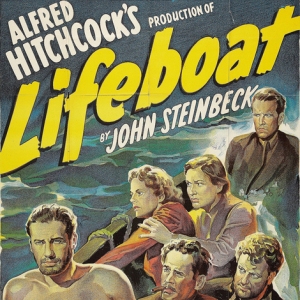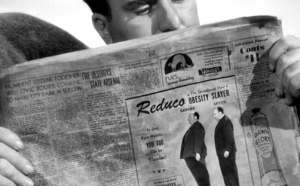Hitchcock’s last wartime feature film was one of his best.
Lifeboat opens with the remains of a bombed ship disappearing under the ocean. The survivors, from all different backgrounds, haul themselves on board a lifeboat amid the debris. They quickly realise that one of their fellow survivors is a Nazi U-Boat captain (played by Austrian actor Walter Slezak). With no food or water, they need to set a course for Bermuda, but only their German prisoner has the seamanship to get them there. How much can they afford to rely on their enemy?
The first thing to remark about Lifeboat is Hitchcock’s supreme technical achievement. All the action takes place within the confines of the small vessel, yet thanks to John Steinbeck’s dynamic script and Hitchcock’s directorial tricks, it remains a gripping story throughout.
The cast is uniformly excellent. Slezak is superb as the Nazi prisoner. Like the other crew members, we’re always uncertain how much we should trust him. As for rest of the character, Tallulah Bankhead as the cynical columnist Connie is a stand-out delight.
The film is also notable for Joe (Canada Lee) who is one of the first black characters to have a key role in a mainstream American talkie. Although I did notice that he’s the only main character not to feature on the film’s poster. Urgh. Blame Hollywood for that one.
The film was initially panned by critics upon release. Incredible as it may seem, Hitchcock was actually accused of sympathizing with Nazi ideology because the U-boat captain was depicted as competent. Of course, this was grabbing the wrong end of the stick. Hitchcock wanted to show the necessity of putting aside differences to unite against the common enemy of fascism, which was disciplined, capable, and cunning. On a more basic level, it’s adds to the drama of the situation as the characters wonder to what extent the man is a hindrance or a help.
Lifeboat is one of Hitchcock’s most overlooked gems. His self-imposed restrictions (i.e. never leaving the boat) creates powerful examination of human interaction and also results in one his most inventive directorial cameos to date.



